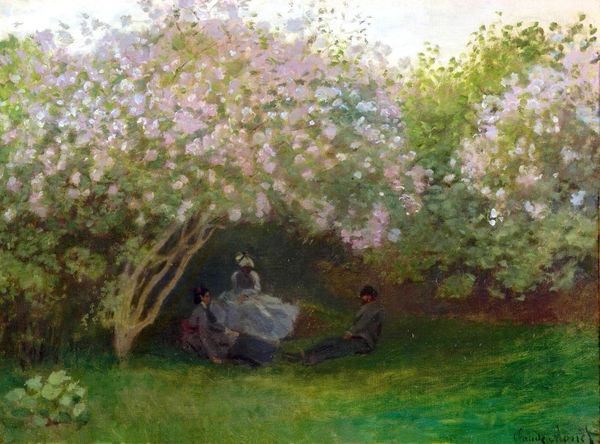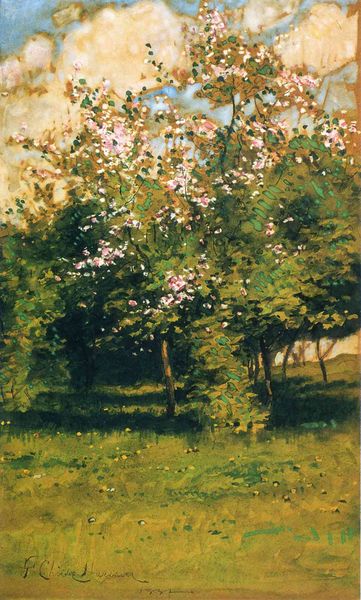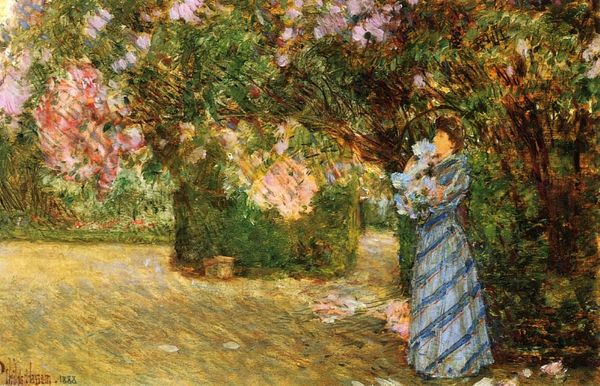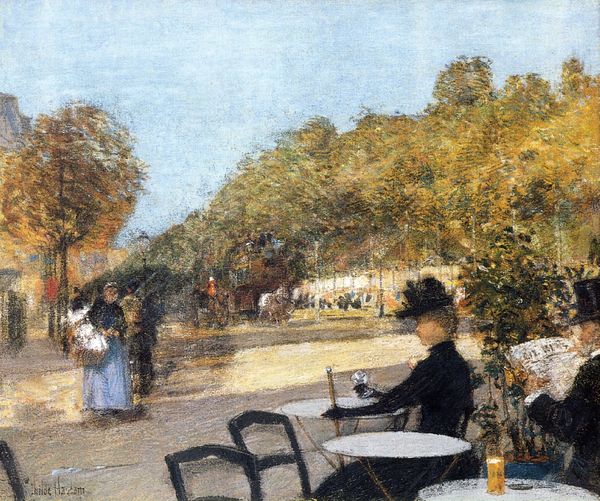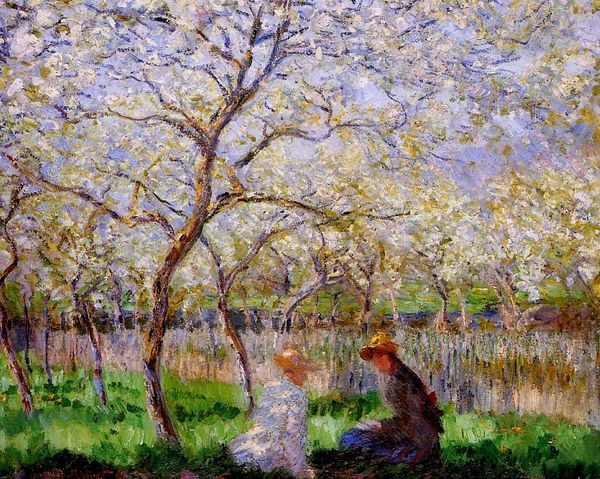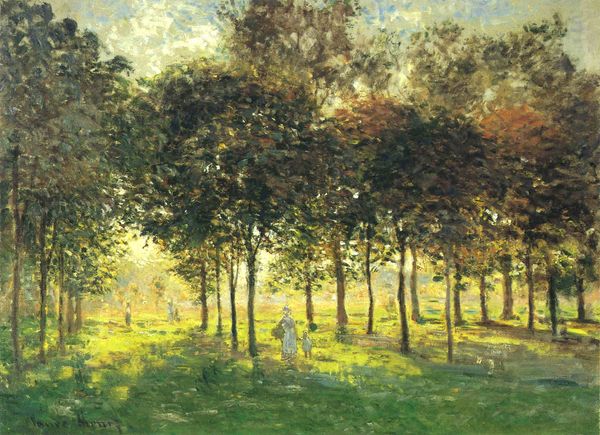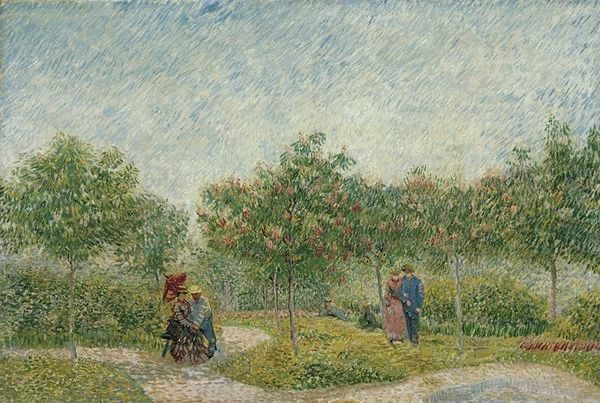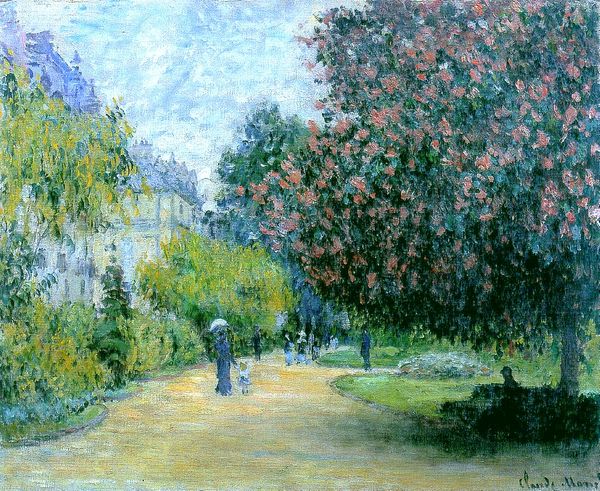
painting, plein-air, oil-paint
#
painting
#
impressionism
#
plein-air
#
oil-paint
#
landscape
#
impressionist landscape
#
genre-painting
Copyright: Public domain
Curator: Let’s turn our attention to Claude Monet’s, "The Garden," completed in 1872. Monet, of course, was a pivotal figure in the Impressionist movement, and this piece is just teeming with those characteristic qualities. Editor: My first thought is how overwhelmingly tranquil it feels. It’s awash with dappled light and soft color. There’s an immediate sense of calm and leisure that radiates from the scene, a glimpse of bourgeois life perhaps? Curator: Precisely. Monet was deeply interested in capturing the fleeting effects of light and atmosphere, what he called "sensations". Consider the context; the aftermath of the Franco-Prussian War shaped a lot of Parisian art at the time as artists sought out a visual vocabulary for moving beyond tragedy. The Impressionists wanted to find beauty in modern life, in what was actually present rather than historical or mythical tropes. Editor: That certainly echoes here. It seems like more than a representation of a specific place; it's more about conveying a sensory experience. I see how the loose brushstrokes and pastel tones help evoke a feeling of being immersed in a hazy summer afternoon, don’t you think? The two seated women almost feel like afterthoughts. Curator: Yes, the figures become integrated into the landscape itself, almost dissolving into it! Looking closer, the canvas reflects how Impressionists rebelled against academic painting by experimenting with color theory. This freedom from traditional, formal compositions allows viewers a kind of intimate moment with the canvas itself and moves painting out of the formal salon, making way for different aesthetic interpretations of our place in the world. Editor: You make me consider those artistic conventions of his day even further, like painting “en plein air” to depict that modern perspective through immediacy, and a democratizing artistic process. Do you think Monet aimed to critique those rigid norms while suggesting new social experiences and possibilities? Curator: I believe so. The garden offers not only an escape but a different visual terrain that moved beyond previous social limitations—I would argue it mirrors a growing societal shift towards individualism, personal enjoyment and perhaps even feminine leisure within that rapidly changing world. Editor: I see this moment as quietly radical in how it redefined not only the means and function of artmaking but our modern expectations of artistic expression as it should represent ourselves. Curator: Indeed. This landscape—drenched in both natural beauty and art historical significance—invites us to reflect on these changes and how deeply they impact us still. Editor: And, perhaps to consider how we might find such restful spaces for ourselves.
Comments
No comments
Be the first to comment and join the conversation on the ultimate creative platform.
